
Chesham is a market town and civil parish in Buckinghamshire, England, United Kingdom, 11 miles (18 km) south-east of the county town of Aylesbury, about 26 miles (42 km) north-west of central London, and part of the London commuter belt. It is in the Chess Valley, surrounded by farmland. The earliest records of Chesham as a settlement are from the second half of the 10th century, although there is archaeological evidence of people in this area from around 8000 BC. Henry III granted a royal charter for a weekly market in 1257.
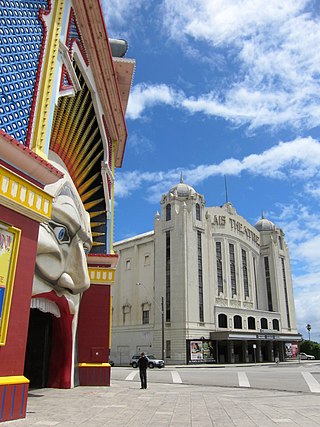
St Kilda is an inner seaside suburb in Melbourne, Victoria, Australia, 6 km south-east of the Melbourne central business district, located within the City of Port Phillip local government area. St Kilda recorded a population of 19,490 at the 2021 census.

Great Missenden is an affluent village and civil parish in the Misbourne Valley in the Chiltern Hills in Buckinghamshire, England, situated between the towns of Amersham and Wendover. It adjoins the village of Little Kingshill, and is a mile from Little Missenden and the village of Prestwood.

Fairfield is a suburb in Melbourne, Victoria, Australia, 6 km (3.7 mi) north-east of Melbourne's Central Business District, located within the Cities of Darebin and Yarra local government areas. Fairfield recorded a population of 6,535 at the 2021 census.

Richmond is an inner-city suburb in Melbourne, Victoria, Australia, 3 km (1.9 mi) east of the Melbourne central business district, located within the City of Yarra local government area. Richmond recorded a population of 28,587 at the 2021 census, with a median age of 34.

Moonee Ponds is an inner-city suburb in Melbourne, Victoria, Australia, 7 km (4.3 mi) north-west of Melbourne's Central Business District, located within the City of Moonee Valley local government area. Moonee Ponds recorded a population of 16,224 at the 2021 census.

Glen Waverley is a suburb in Melbourne, Victoria, Australia, 19 km (12 mi) south-east of Melbourne's Central Business District, located within the City of Monash local government area. Glen Waverley recorded a population of 42,642 at the 2021 census.

Oakleigh is a suburb in Melbourne, Victoria, Australia 14 km south-east of Melbourne's Central Business District, located within the City of Monash local government area. Oakleigh recorded a population of 8,442 at the 2021 census.
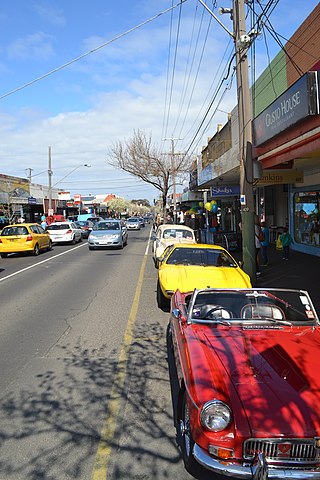
Hampton is a suburb in Melbourne, Victoria, Australia, 14 kilometres (9 mi) south-east of Melbourne's Central Business District, located within the City of Bayside local government area. Hampton recorded a population of 13,518 at the 2021 census.

Carnegie is a suburb in Melbourne, Victoria, Australia, 12 km south-east of Melbourne's central business district, on the railway line between Caulfield and Oakleigh, located within the City of Glen Eira local government area. Carnegie recorded a population of 17,909 at the 2021 census.
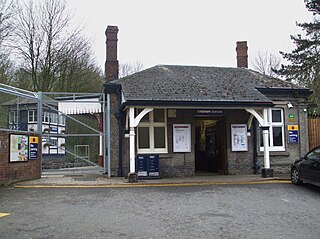
Chesham tube station is a London Underground station in Chesham, Buckinghamshire, United Kingdom. It was opened on 8 July 1889 by the Metropolitan Railway (MR). It is the terminus station of the Chesham branch of the Metropolitan line, which runs from Chalfont & Latimer. The station, a Grade II listed building, is in London fare Zone 9.
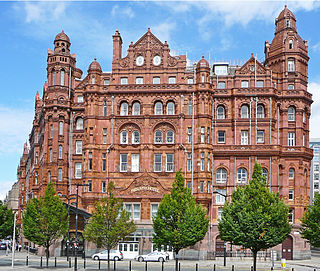
The Midland Hotel is a grand hotel in Manchester, England. Opened in 1903, it was built by the Midland Railway to serve Manchester Central railway station, its northern terminus for its rail services to London St Pancras. It faces onto St Peter's Square. The hotel was designed by Charles Trubshaw in Edwardian Baroque style and is a Grade II* listed building.

Civic is the city centre or central business district of Canberra. "Civic" is a common name for the district, but it is also called Civic Centre, City Centre, Canberra City and Canberra, and its official division name is City.

West Melbourne is an inner-city suburb in Melbourne, Victoria, Australia, 2 km (1.2 mi) north-west of the Melbourne central business district, located within the City of Melbourne local government area. West Melbourne recorded a population of 8,025 at the 2021 census.

Gisborne is a town in the Macedon Ranges, located about 54 kilometres (34 mi) north-west of Melbourne, Victoria, Australia. It is the largest town in the Macedon Ranges Shire, with a population of 14,432 as of June 2021 in the Gisborne district region.

George Selth Coppin was a comic actor, a theatrical entrepreneur, a politician and a philanthropist, active in Australia.
An English cricket team toured Australia in 1861–62. This was the first-ever tour of Australia by any overseas team and the second tour abroad by an English team, following the one to North America in 1859. The team is sometimes referred to as H. H. Stephenson's XI.

Christopher Pond (1826–1881) was a British caterer and hotelier.
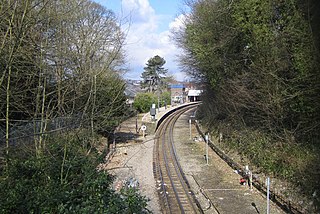
The Chesham branch is a single-track railway branch line in Buckinghamshire, England, owned and operated by the London Underground. It runs from a junction at Chalfont & Latimer station on the Metropolitan line for 3.89 miles (6.26 km) northwest to Chesham. The line was built as part of Edward Watkin's scheme to turn his Metropolitan Railway (MR) into a direct rail route between London and Manchester, and it was envisaged initially that a station outside Chesham would be an intermediate stop on a through route running north to connect with the London and North Western Railway (LNWR). Deteriorating relations between the MR and LNWR led to the MR instead expanding to the northwest via Aylesbury, and the scheme to connect with the LNWR was abandoned. By this time much of the land needed for the section of line as far as Chesham had been bought. As Chesham was at the time the only significant town near the MR's new route, it was decided to build the route only as far as Chesham, and to complete the connection with the LNWR at a future date if it proved desirable. Local residents were unhappy at the proposed station site outside Chesham, and a public subscription raised the necessary additional funds to extend the railway into the centre of the town. The Chesham branch opened in 1889.
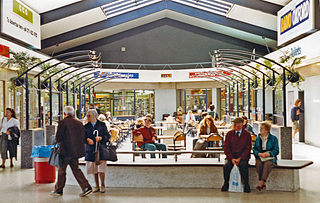
A railway refreshment room is a catering facility attached to a railway station that was formerly common in Britain, Australia, New Zealand, and other countries that were formerly part of the British Empire. They were opened in the 19th century to serve passengers when trains did not convey catering facilities, and thus served passengers en route. Refreshment rooms were similar to tearooms, and generally served a variety of hot drinks, pastries, cakes, and light meals. With the introduction of buffet and restaurant cars, their importance began to decline.



















